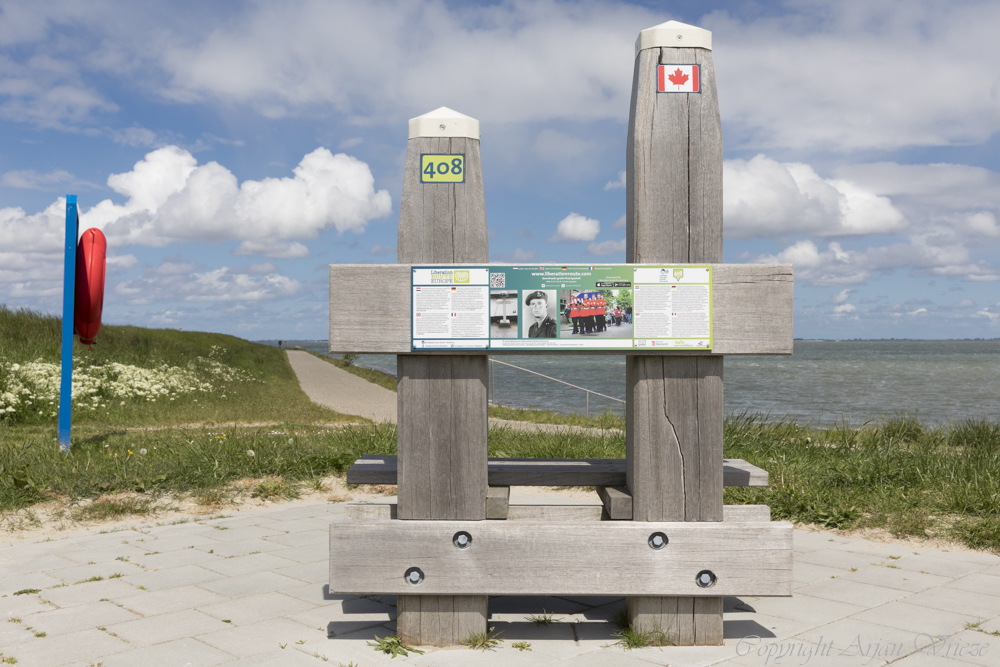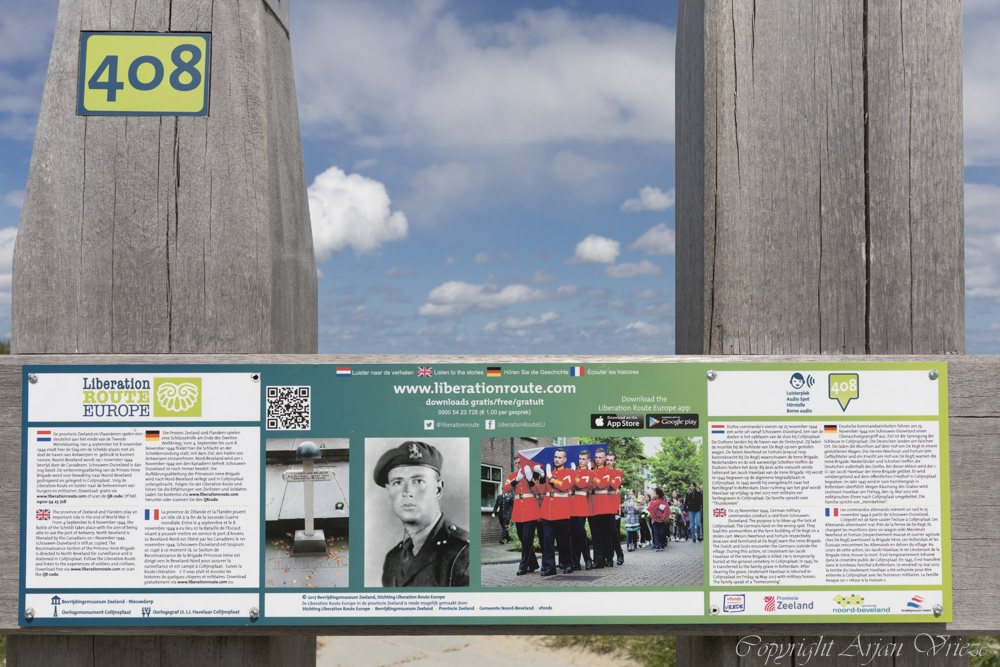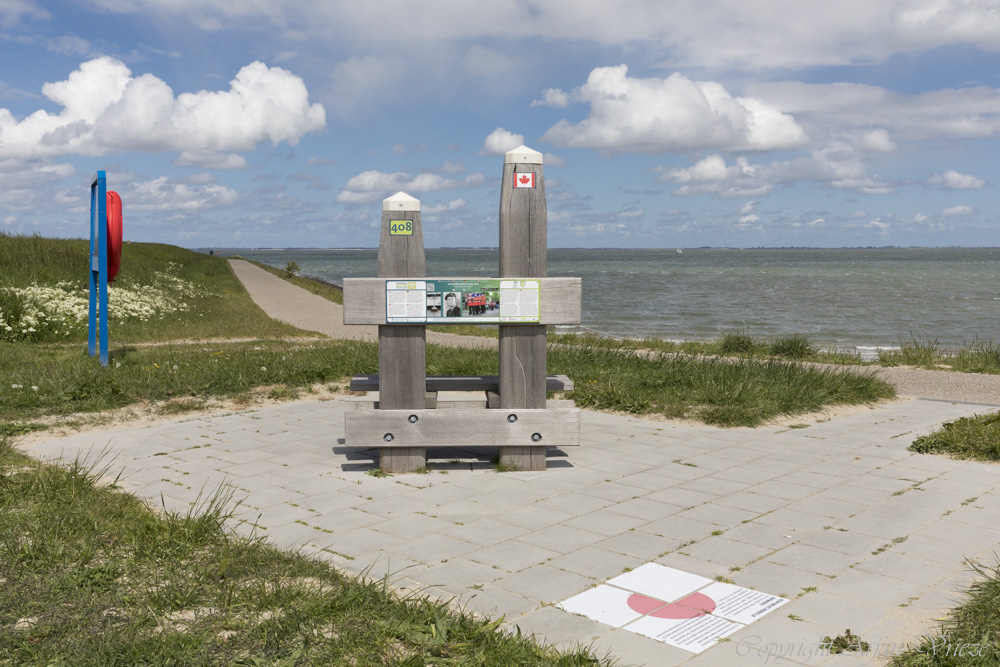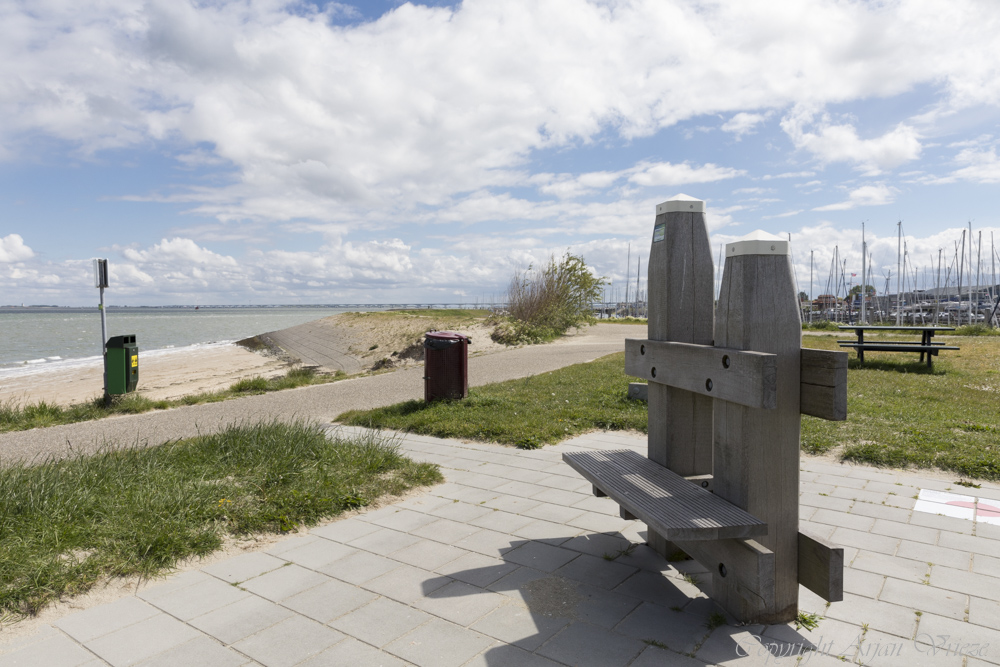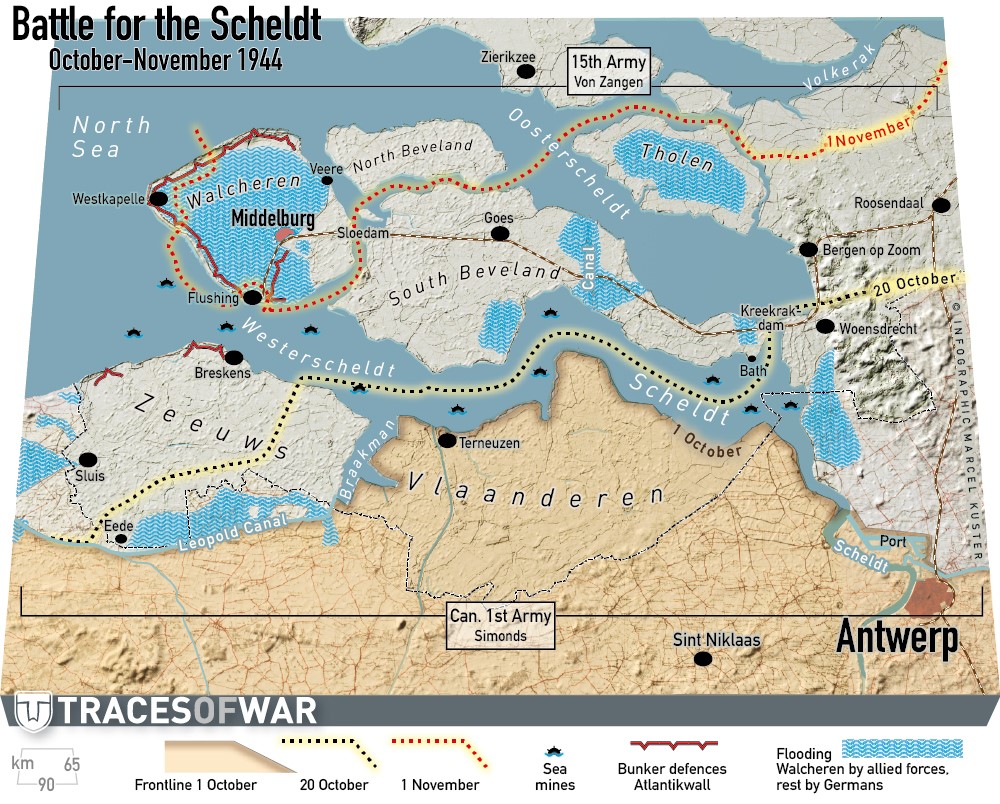Liberation Route Marker 408: The attack on Colijnsplaat
The attack on Colijnsplaat
On 1 November 1944, the island of North Beveland was liberated by the Canadians. Schouwen-Duiveland is still occupied at that point. The Recce (Reconnaissance Section) of the Princess Irene Brigade was directed to North Beveland to guard the island. They were stationed in Colijnsplaat.
German commandos carried out an attack from Schouwen-Duiveland on North Beveland on November 25, 1944. The intention was to blow up the lock at Colijnsplaat. However, the Germans landed the wrong way. Therefore, the ammunition was loaded onto a stolen wagon at the homestead of the De Regt family and pushed to Colijnsplaat. The Princess Irene Brigade was warned in time by Messrs. Neerhout and Fortuin (an evacuee from Schouwen-Duiveland and a farmhand with the De Regt family).
The Prinses Irene Brigade, supported by the Scots, hit the Germans outside the village after which a firefight ensued. In this action first Lieutenant I.J. (Ian Jacob) Havelaar of the Prinses Irene Brigade was killed and was temporarily buried in the general cemetery in Colijnsplaat on Sunday November 26, 1944.
After the liberation in 1945, the remains were transferred to the family grave in the Hillegersberg cemetery in Rotterdam. Years later, in 2017, the Havelaar family grave in Rotterdam was cleared. Then, on Friday, May 19, 2017, First Lieutenant I.J. (Ian Jacob Havelaar) was reburied with military honors in Colijnsplaat. The lieutenant's family spoke of “Coming Home” at that time.
Audiospot - The attack on Colijnsplaat
Liberation Route Europe is a certified Cultural Route of the Council of Europe. With hundreds of sites and stories in nine European countries, the route links the main regions along the advance of the Allied Forces in 1943-1945.
The entire route consists of themed routes that can be travelled by by hiking, walking, cycling and car. These routes pass numerous historical and interesting sites and tell stories from a multitude of perspectives that were important in the final phase of World War II.
Many routes feature listening spots, offering the opportunity to listen to a historical story at a location. In addition, many ‘Vectors of Memory’ have been placed, indicating that the passer-by is on one of the Liberation Routes.
The routes can be found on the Liberation Route Europe website or in the app through which many stories can also be listened to.
Do you have more information about this location? Inform us!
Source
- Text: TracesOfWar & Liberation Route Europe
- Photos: Arjan Vrieze
Nearby
Point of interest
- Impact Site V-1 Kaaidijk - Kortgene
- Phoenix Caisson Serooskerke - Serooskerke
- Former Prison Goes - Goes
Monument
- Memorials Colijnsplaat - Colijnsplaat
- War Memorial Wissenkerke - Wissenkerke
- Memorial Victims of Schouwen-Duiveland - Zierikzee
Cemetery
- Dutch War Grave Colijnsplaat - Colijnsplaat
- Commonwealth War Graves Colijnsplaat - Colijnsplaat
- Commonwealth War Grave Kats - Kats
Remembrance Stone
- Stumbling Stones Breedstraat 10 - Zierikzee
- Stumbling Stone Sint Domusstraat 19 - Zierikzee
- Stumbling Stones Sint Domusstraat 17 - Zierikzee
Fortification
- Wn 341 L Tobruk Zierikzee - Zierikzee
- Wn 341 L Tobruk Panzerturm Zierikzee - Zierikzee
- Altantikwall - Ringstand "Tobruk" Burghsluis - Burghsluis
